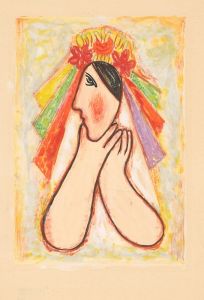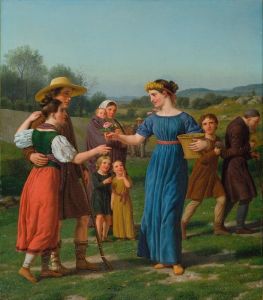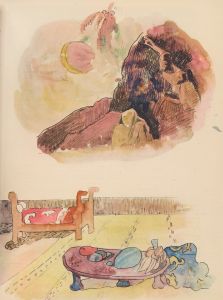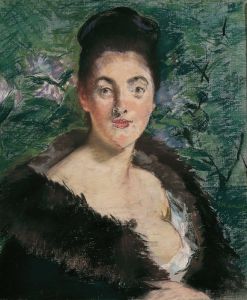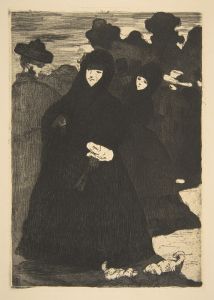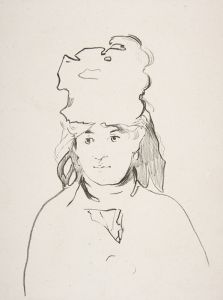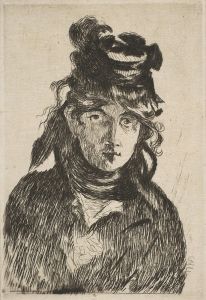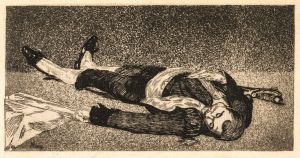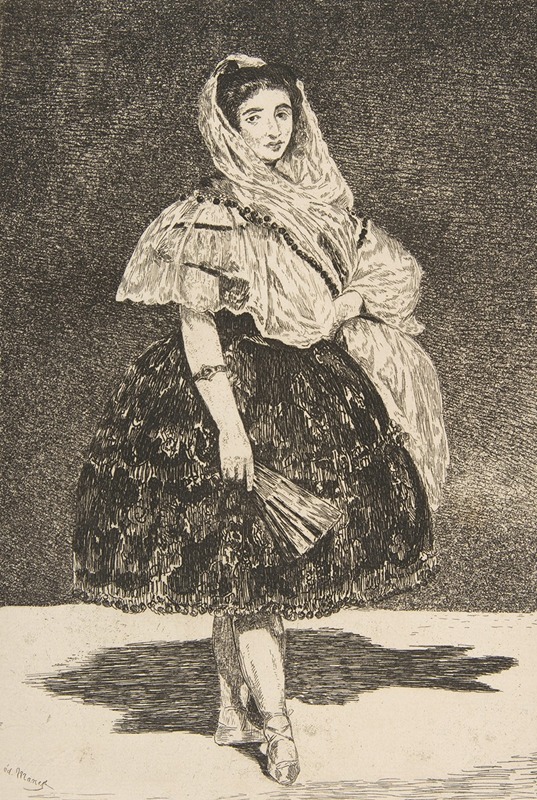
Lola de Valence
A hand-painted replica of Édouard Manet’s masterpiece Lola de Valence, meticulously crafted by professional artists to capture the true essence of the original. Each piece is created with museum-quality canvas and rare mineral pigments, carefully painted by experienced artists with delicate brushstrokes and rich, layered colors to perfectly recreate the texture of the original artwork. Unlike machine-printed reproductions, this hand-painted version brings the painting to life, infused with the artist’s emotions and skill in every stroke. Whether for personal collection or home decoration, it instantly elevates the artistic atmosphere of any space.
"Lola de Valence" is an oil painting created by the French artist Édouard Manet in 1862. The painting depicts a Spanish dancer named Lola Melea, who was known by her stage name Lola de Valence. She was a member of a Spanish dance troupe that performed in Paris during the mid-19th century. Manet's interest in Spanish culture and art is evident in this work, as he was influenced by Spanish painters such as Diego Velázquez and Francisco Goya.
The painting measures 123.5 cm by 92 cm and is currently housed in the Musée d'Orsay in Paris, France. In "Lola de Valence," Manet captures the dancer in a moment of poised elegance. She is depicted standing with her hands on her hips, wearing a traditional Spanish costume that includes a ruffled skirt, a bolero jacket, and a mantilla. The vibrant colors and detailed textures of her attire contrast with the dark, undefined background, drawing the viewer's attention to her figure.
Manet's portrayal of Lola de Valence is notable for its bold use of color and light. The artist employs a technique that emphasizes the play of light on the dancer's costume, creating a sense of depth and movement. The painting's composition and the direct gaze of the subject reflect Manet's modern approach to portraiture, which often challenged traditional conventions.
"Lola de Valence" was exhibited at the Salon of 1863, where it received mixed reviews. Some critics praised Manet's skillful execution and innovative style, while others were less favorable, finding the painting's realism and boldness controversial. Despite the divided opinions, the painting contributed to Manet's growing reputation as a leading figure in the avant-garde art movement of the time.
The painting also holds historical significance as it reflects the cultural exchange between France and Spain during the 19th century. Spanish dancers and musicians were popular in Paris, and their performances influenced many French artists, including Manet. "Lola de Valence" is an example of how Manet incorporated elements of Spanish culture into his work, blending them with his own unique artistic vision.
In addition to its artistic and cultural importance, "Lola de Valence" is also significant in the context of Manet's broader oeuvre. The painting is part of a series of works by Manet that feature Spanish themes and subjects, including "The Spanish Singer" and "Mlle V... in the Costume of an Espada." These works demonstrate Manet's fascination with Spanish art and his desire to explore new artistic possibilities.
Overall, "Lola de Valence" is a testament to Édouard Manet's innovative approach to painting and his ability to capture the essence of his subjects with striking realism and emotional depth. The painting remains an important piece in the history of 19th-century art and continues to be admired for its technical mastery and cultural significance.







